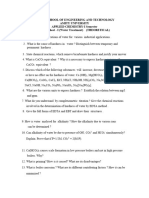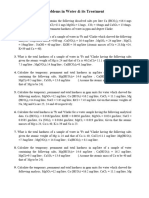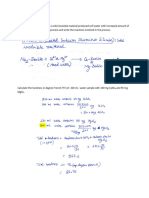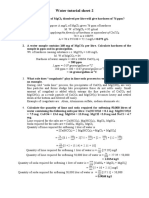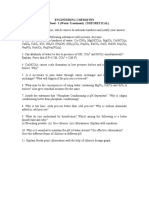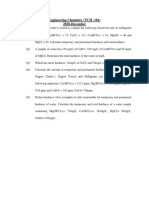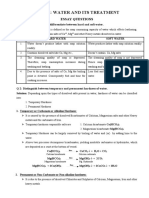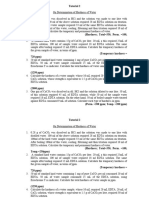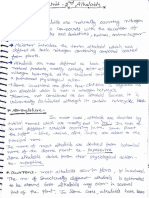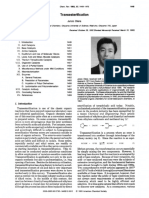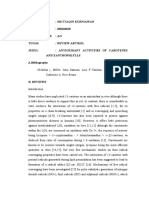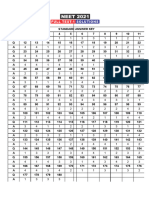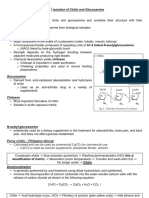0% found this document useful (0 votes)
77 views6 pagesTutorial Sheets
The document contains 6 tutorial sheets with multiple chemistry problems related to determining water hardness using different methods. The problems cover calculations of hardness in ppm or degrees using data on water ion concentrations from EDTA titration, soap titration, and lime-soda softening. The last sheet includes problems using the zeolite softening process.
Uploaded by
sarita chaudhary chemestryCopyright
© © All Rights Reserved
We take content rights seriously. If you suspect this is your content, claim it here.
Available Formats
Download as DOCX, PDF, TXT or read online on Scribd
0% found this document useful (0 votes)
77 views6 pagesTutorial Sheets
The document contains 6 tutorial sheets with multiple chemistry problems related to determining water hardness using different methods. The problems cover calculations of hardness in ppm or degrees using data on water ion concentrations from EDTA titration, soap titration, and lime-soda softening. The last sheet includes problems using the zeolite softening process.
Uploaded by
sarita chaudhary chemestryCopyright
© © All Rights Reserved
We take content rights seriously. If you suspect this is your content, claim it here.
Available Formats
Download as DOCX, PDF, TXT or read online on Scribd
/ 6


